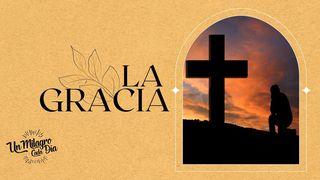Loving Our Global NeighborMuestra

What's A Poverty Trap?
What does it mean to be trapped?
My daughter had a fear of car washes when she was four. I, of course, didn’t know this until after I drove my car into the “car wash cave” and put it in neutral. As soon as the colored soap sprayers shot foamy bubbles and the washing machines surrounding the car got increasing louder, she was in a full-on panic. She unclicked her seat belt and jumped into the front seat with me, burying her face in my chest and screaming as if all the nightmares she’d had in her little life had been unleashed. She wanted out of the car, but somehow understood that getting out wasn’t an option. She desperately wanted me to help her, to get her to safety, but I had to sit with her and wait it out. We were both trapped, only I was okay with it. She felt powerless to do anything; I knew nothing was wrong, so I was fine waiting it out.
This is the difference between those who live in impoverished communities and those who don’t. Simply put, when someone has no means to escape a threatening situation, has no access to clean water and proper food, all feels scary and even hopeless—trapped! But one day if I were to experience a power outage in my house and a car out of gas, I might feel trapped, but empowered enough to know that I could call for help and it would come, because my situation would only be temporary—not hopelessly trapped!
Poverty traps, in particular, are oppressing and can even be life-threatening. Wydick names the main traps that the impoverished circle in unless someone comes and beaks the cycle: The Nutrition Trap, The Savings Trap, The Credit Trap, The Technlogy Trap, The Sickness/Insurance/Housing Merry-Go-Round Trap, The Education Trap, The Investment Trap, The Environmental Trap, The Aspirations Trap, The Self-Confidence Trap, and The Hopelessness Trap. If you’ve read about these traps, can you identify one that speaks to you or someone you know? Take it a step further and imagine yourself in one of the harshest traps (in your opinion) and sit with it, imagining your family in the trap with you, and you want nothing more than to find a solution but on your own efforts, there is none. The only way out is reaching for a hand in the dark . . . and finding one there.
Some of the poverty traps listed above relate to internal restraints; some relate to external restraints. They are also individual or collective in nature. When external constraints are in motion, the poor are kept from access to schools, health care, infrastructure, employment opportunities, and credit. Internal restraints, though, relate to how the psychology, spiritual worldview, perceptions of causality, and local customs influence behavior. They also influence the way people think about and perceive the world.
When you determine how you are to be involved with a cause, it is important to understand the barriers you will come against in trying to lift people out of embedded traps. There is a psychology involved in how traps have branded the oppressed, either through one’s own doing or the collective view of their situation. Those receiving aid will benefit from eventually deeming themselves worthy of changing their life view and their self-worth, which is its own challenge. A skilled person in social work or psychology can be influential to your team’s success. Maybe that person is you! If so, are you prepared for what might be shown to you in the faces and souls of those being helped?
Think on this verse, and let it remind you of strength in numbers and “the importance of being prepared as much as possible: “Plans fail for lack of counsel, but with many advisers they succeed” (Proverbs 15:22 NIV).
Questions to ask yourself:
Have you ever felt like your life was caught in a “trap” from which you could not easily escape? Did this experience help you in any way to relate to those trapped in poverty?
The failure to identify and diagnose traps correctly results in chronic ineffectiveness. Even people with the best of intentions working among the poor have sometimes implemented a one size-fits-all approach to alleviating poverty. Have you ever made assumptions and generalizations in your efforts to help? Did it work out anyway, or did you have regrets? Or, did you watch someone else use the one-size-fits-all mind-set and had to intervene? What is a way to avoid this as you proceed with your mission?
Prayer:Lord, I know my ignorance is the main thing that hinders my effectiveness in serving others. I get fired up to help and think I understand what’s needed based on assumptions or past situations or other’s stories. I ask you to give me the patience to do my research so I start from zero as I seek to understand where a person or community is stuck in a trap. Also, open my eyes to the traps I’m in and help me find ways to reach out and accept help to come to higher ground. Amen.
Escritura
Acerca de este Plan

This reading plan includes five daily devotions on Bruce Wydick's book Shrewd Samaritan: Faith, Economics, and the Road to Loving Our Global Neighbor. This study helps you understand your unique role and purpose when it comes to giving back and loving your neighbors well.
More






